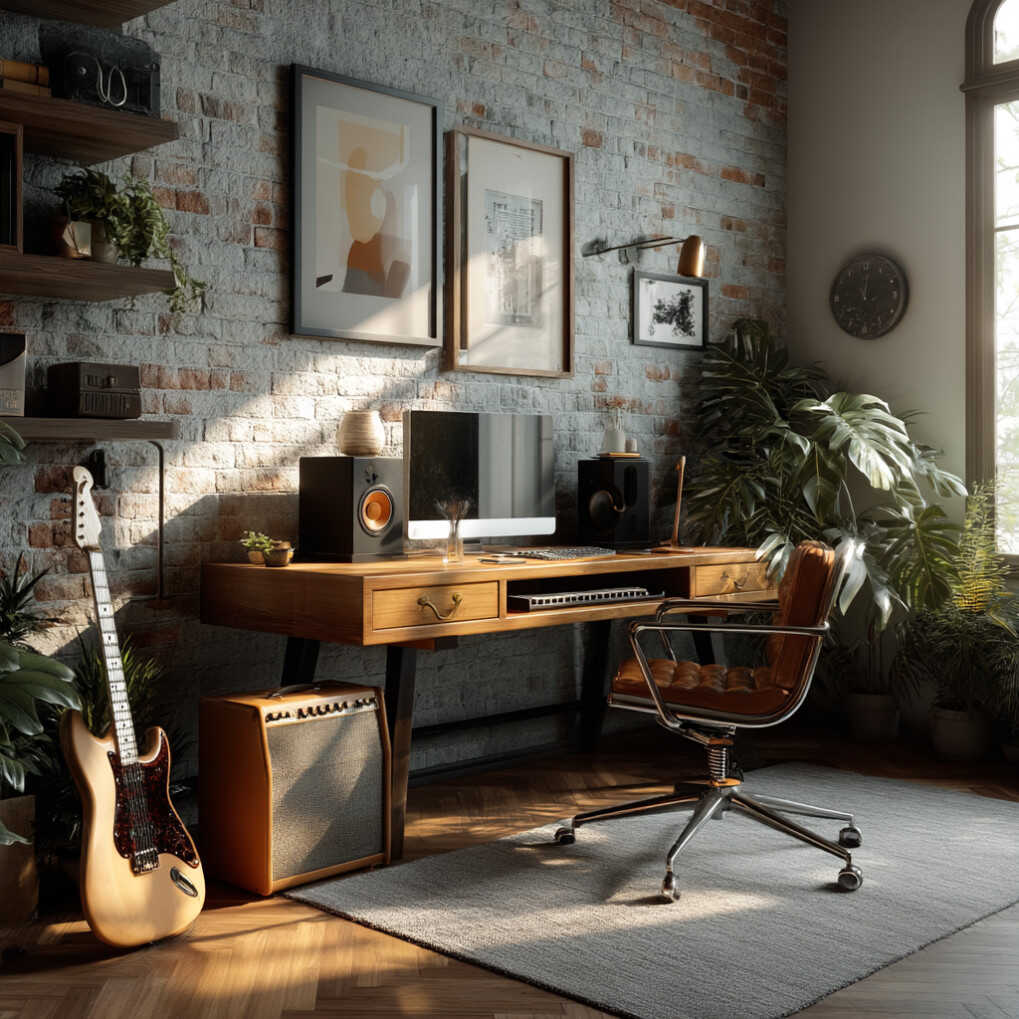If you’ve ever tried to create the *perfect* music room, one that balances creativity, acoustics, and tech, you know it’s no small feat. Whether you’re a professional producer or a bedroom music aspirant, a well-planned environment can make or break your sound and workflow. Happily, we’re at a point where artificial intelligence (AI) isn’t all about self-driving cars or chatbots.
It’s coming into studios, home offices, and garages, and helping us rethink how music spaces are built, used, and optimized. Yes, including gadgets like an AI music maker, which are now capable of producing melodies, beats, or harmonies. AI, though, can do much, much more than just songwriting. Now we’re talking about the way that AI software is reshaping the very look of music rooms, helping musicians give their space the kind of improvement we could have only dreamed about a decade ago.

Here, let’s look at using AI to create your music room into a top-end creative paradise.
Why Music Room Design Is More Than You Ever Thought
Before we dive into the tools, let’s break down why music room design needs to be on your radar. A great room has nicer LED lights and expensive gear. It’s more about:
- Clean sound: Acoustics matter. Cluttered rooms will muddy your mix or distort sound.
- Flow: The right layout makes you more productive and on-point.
- Inspiration: A well-designed room inspires. An echoey or cluttered one? No.
Regardless of whether you record, mix, or write, your space itself impacts the quality of your music. And now, with AI-driven design software, the barriers to building a functional, beautiful studio have come way down.
How AI is Revolutionizing Music Room Design
Those days are gone when creating a music room needed costly consultants or guesswork adjustments. AI software is providing smart recommendations based on the size, configuration, and even your music type of choice. Here’s how:
1. AI-Based Acoustic Analysis
Software like Sonarworks SoundID and Room EQ Wizard now have AI to analyze the acoustics of your room. They play test tones and give you precise feedback like which frequencies are too loud, too soft, or resonating too much.
ur space or style? Leave a comment or shoot me a message—I’d love to help you fine-tune your space for better music-making.
2. AI Room Layout Planners
Want to figure out where to place your desk, monitors, or sound panels? AI layout tools like RoomSketcher or Planner 5D offer drag-and-drop interfaces with AI-driven suggestions based on acoustical modeling and ergonomic design.
Some even integrate with augmented reality (AR), allowing you to visualize the space with your gear inside before moving a single item.
Actionable Tip: Input your room’s dimensions into a planner, specify your gear, and let the tool recommend ideal placements for your monitors, typically in an equilateral triangle with your ears.
3. Smart Sound Treatment Recommendations
Rather than guessing where to stick foam panels or diffusers, AI tools like Auralex’s Acoustics Room Analysis use uploaded room photos and measurement data to suggest exact treatment plans. These tools even generate heatmaps showing sound pressure zones super helpful for treating bass-heavy corners.
Did You Know? Bass frequencies tend to collect in corners, which is why most AI tools recommend starting with bass traps before anything else.
Designing for Creativity: Not Just Science
Of course, a music room isn’t just a lab, it’s your creative playground. And AI isn’t just about function; it can help with vibe, too.
AI Mood & Lighting Control
If you’re using smart lights like Philips Hue or Nanoleaf, AI tools like IFTTT or Home Assistant can automatically shift lighting based on the time of day, your schedule, or even your Spotify playlist.
Example: Soft blues for writing, warm ambers for mixing, or reactive lighting that pulses with your beat—totally possible and super immersive.
Automated Inspiration Boards
Using AI art generators like Midjourney or DALL·E, you can create moodboards based on your genre, favorite artists, or visual concepts. These visuals can help shape your studio’s aesthetic from wall art to lighting styles.
Actionable Tip: Try feeding your lyrics or genre descriptors into a visual AI tool and build a theme from the results. It’s like album art, but for your walls.
Real-World Examples: Studios Using AI in Design
Abbey Road Red
Abbey Road Studios launched its innovation arm, Abbey Road Red, to explore AI in music tech—including room optimization. They’ve tested AI-based tools to help new artists create better home setups using machine learning models trained on studio acoustic data.
DIY Producers on Reddit
Producers across forums like r/BedroomBands and r/WeAreTheMusicMakers share AI design wins regularly, from using AI to measure reverb decay in closets to optimizing bedroom studio setups with free layout tools.
One user shared that they gained a 12% clarity boost in their mixes just by following an AI-suggested monitor placement and foam configuration. That’s not just numbers, it’s better music.
The Future: AI-Powered Adaptive Studios?
Looking ahead, we’re seeing prototypes of studios that adapt in real-time using AI automatically adjusting acoustic panels, lighting, and even gear presets based on your current session.
Imagine walking into your room and having it set itself up for hip-hop beat making in the morning, then orchestral scoring by night, all based on AI pattern recognition.
Final Thoughts: Should You Use AI for Your Music Room?
If you’re serious about your music, AI tools can be your secret weapon. They don’t replace your creativity, they enhance it. From better sound and smarter layouts to inspiration that actually feels personal, designing a music room with AI isn’t just futuristic, it’s practical right now.
So go ahead: plug in your room dimensions, run a sound test, play with some AI lighting scenes. Your perfect music room is no longer a dream, it’s just a few clicks away.
